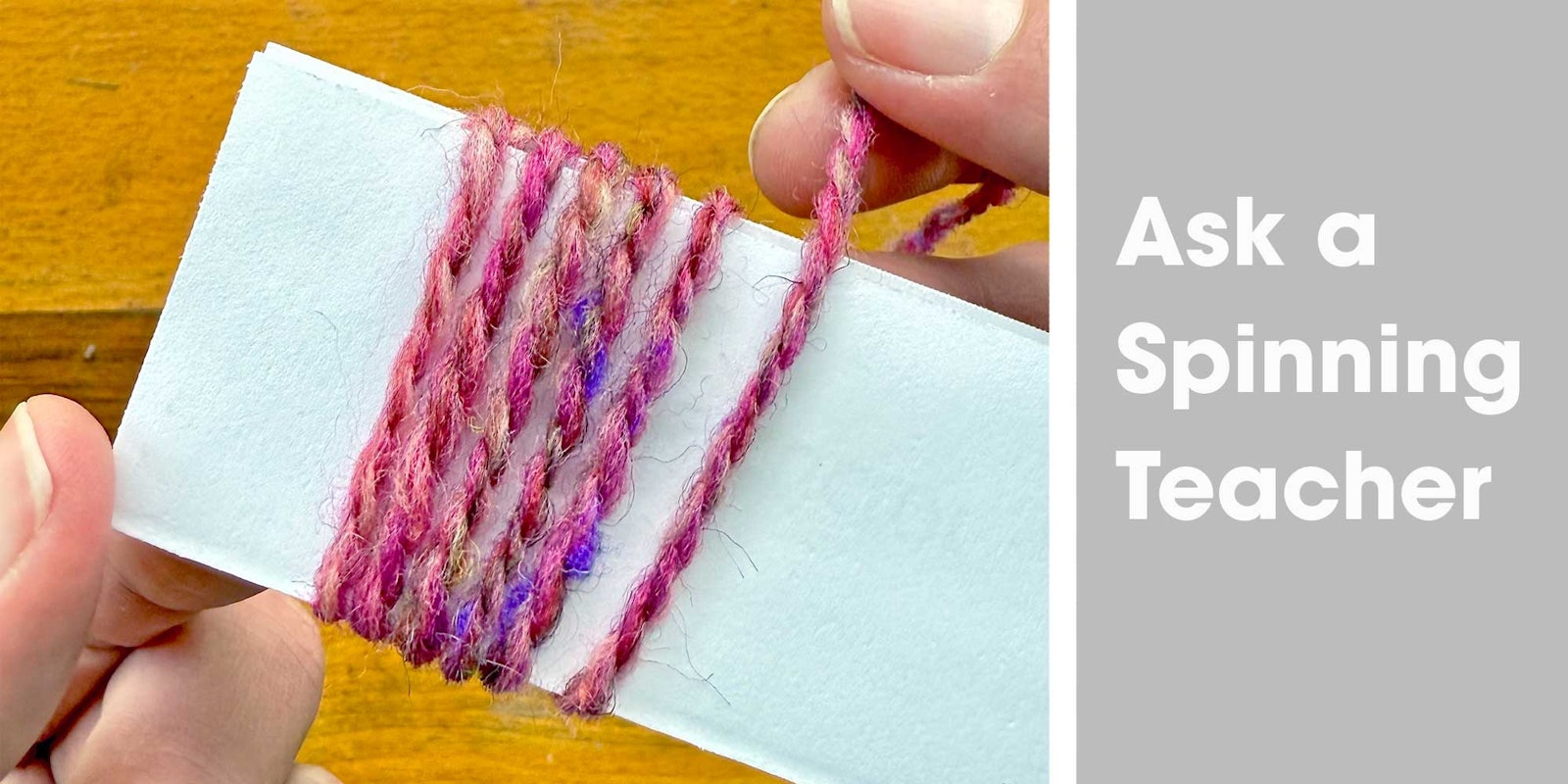Here’s a great question from a reader: “Even using the same pulley, my yarns tend to get thinner and thicker as I spin. How can I keep the diameter steady over multiple spinning sessions?”
Ultimately, the question, “How do I spin a more consistent yarn?" is one of the common questions a new spinner asks.
We asked spinning teacher and frequent Spin Off contributor Amy Tyler to help new spinners understand how to spin consistent yarn. Here’s Amy:
A good strategy to maintain a consistent thickness (diameter) in your singles as you spin is to intermittently test them; that is, compare the singles you are spinning to some reference or measurement.
The strategy I use for spinning singles at a consistent thickness is to use a reference sample, commonly known as a plyback sample. A reference sample is a length of plied yarn that you use as your “ideal” to which you compare your spinning. I suggest making a fairly long reference sample, about 24 to 36 inches. That way, if there are some inconsistencies in thickness, you are likely to capture them within this longer sample.
How to make a reference sample
To make a reference sample of this length without making a tangle, use an orifice hook as a sort of drop spindle to help you ply a long singles back on itself. Here's how:
1) First, pull about an arm’s length of singles off of your bobbin.
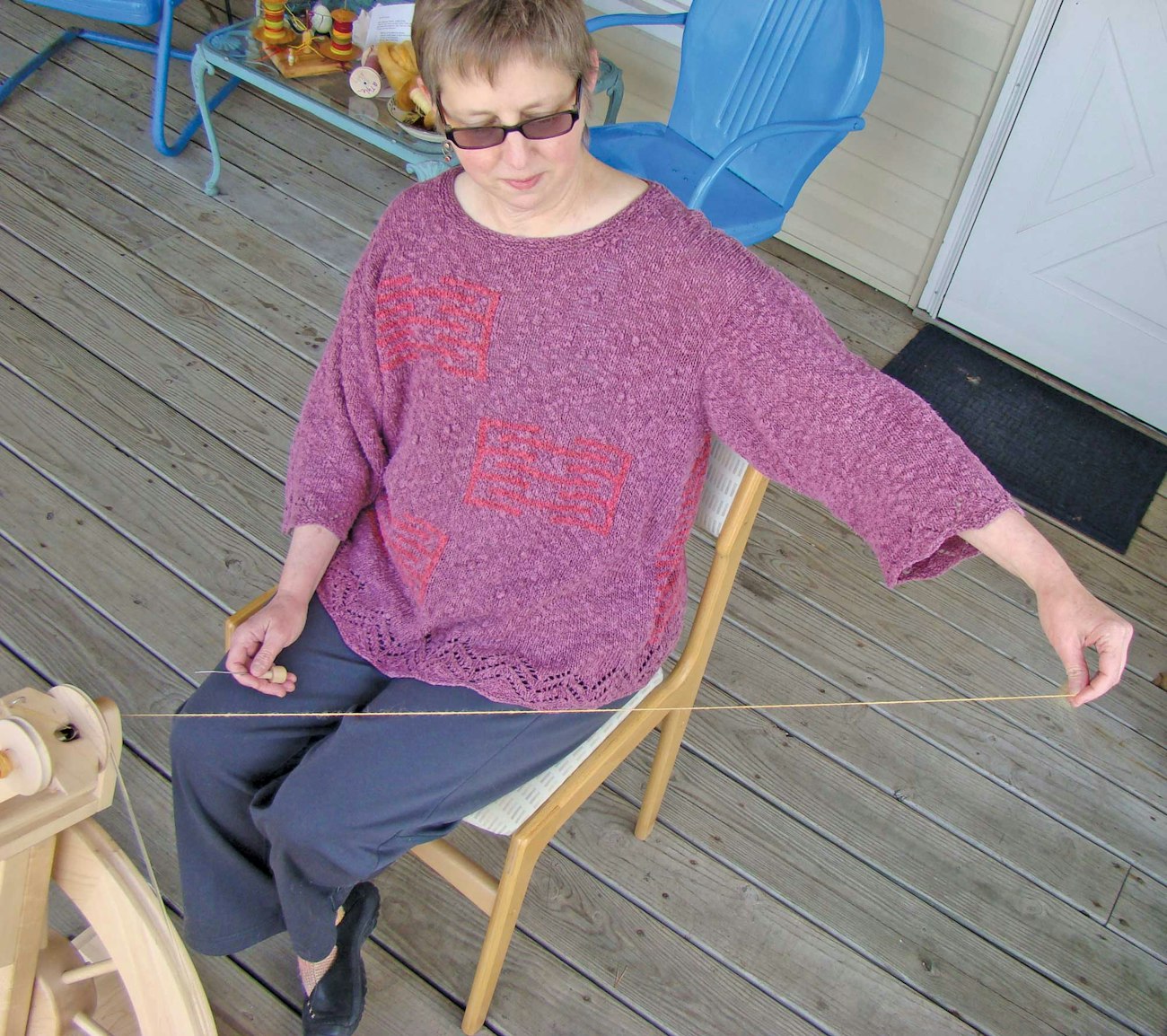
2) Next, use the orifice hook to snag the singles near the orifice.
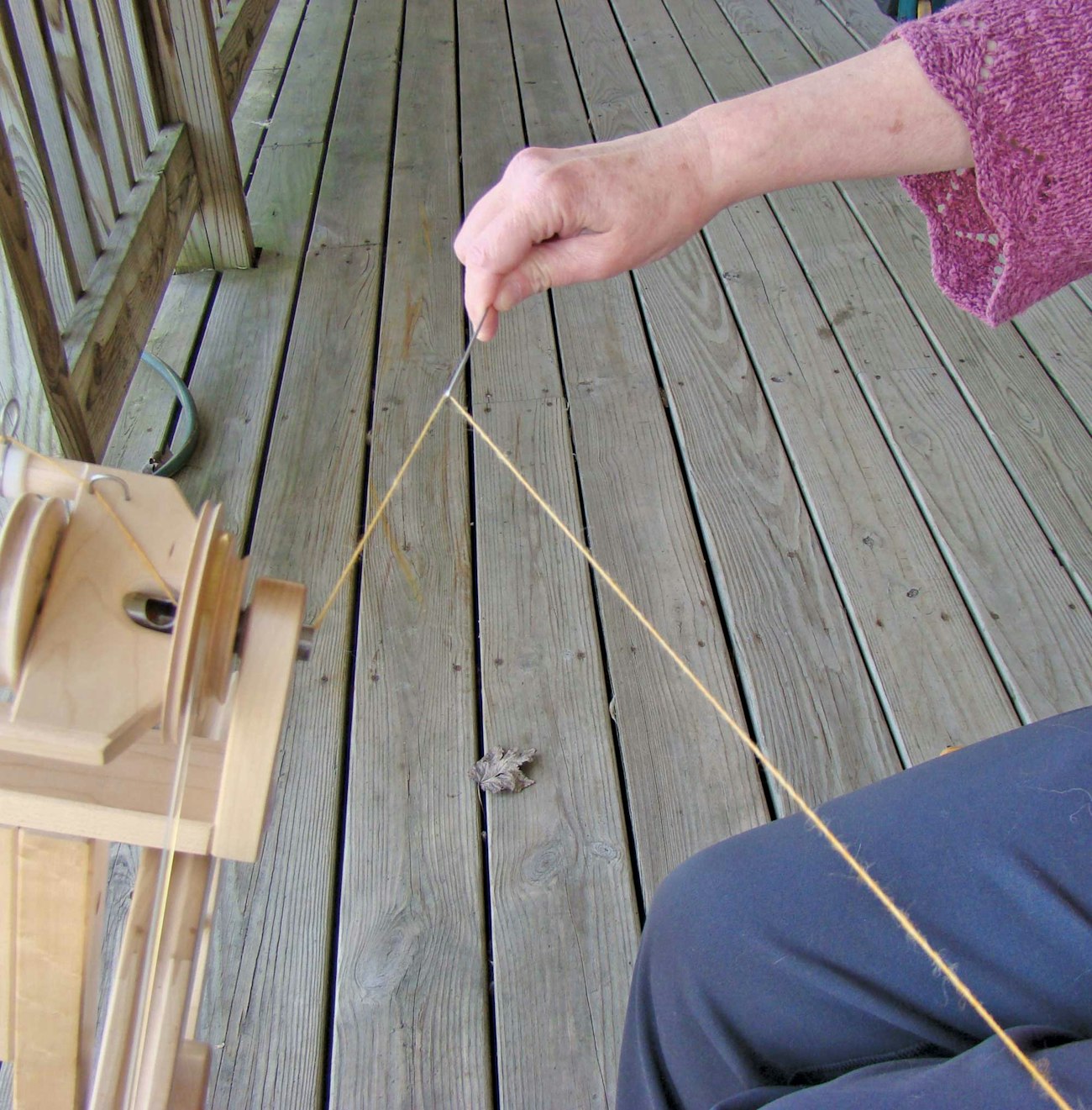
3) Now pull another arm’s length of singles with the orifice hook holding the doubled singles under tension.
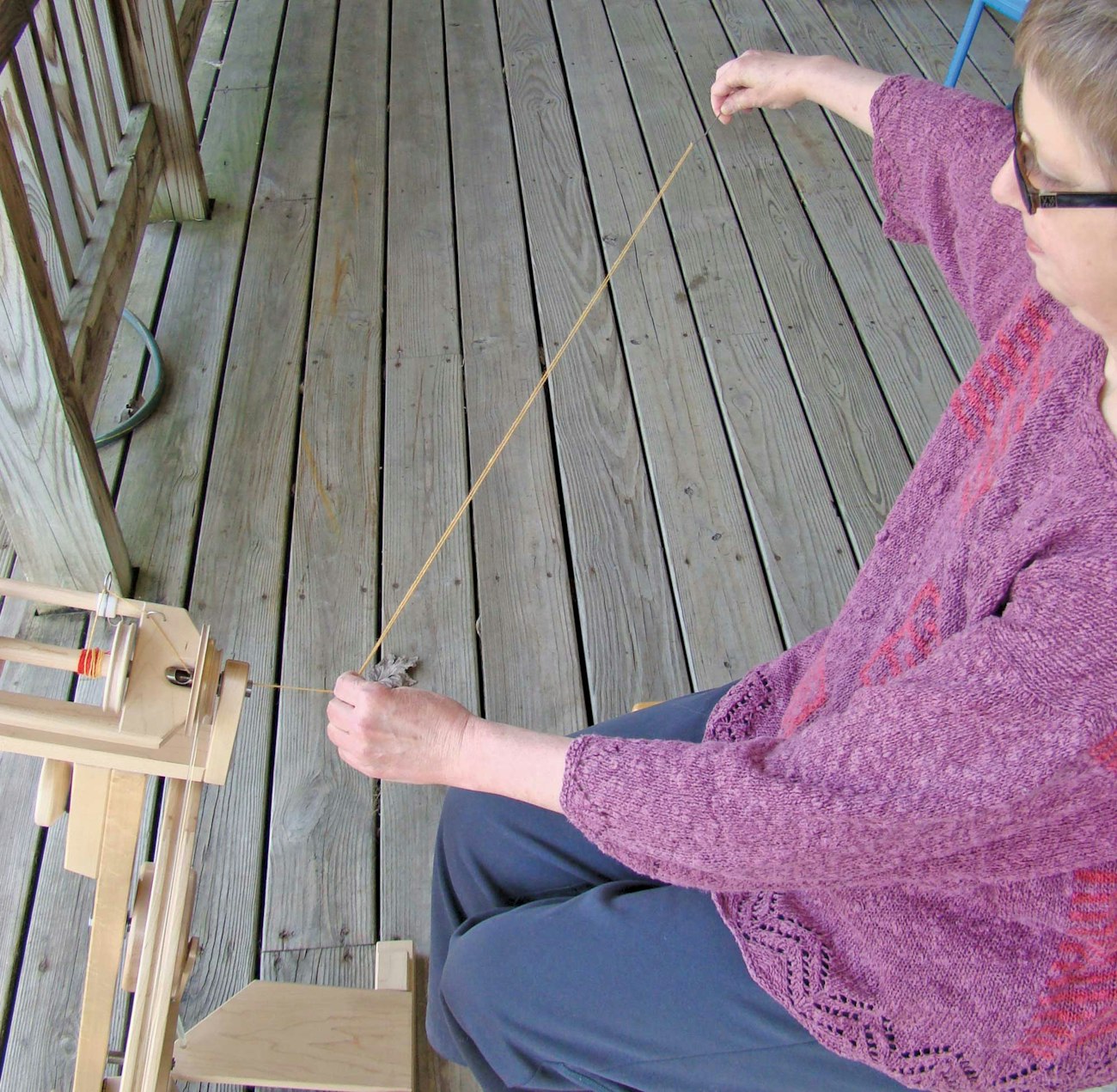
4) Take the hand with the orifice hook down toward the ground and the other hand up toward the sky.
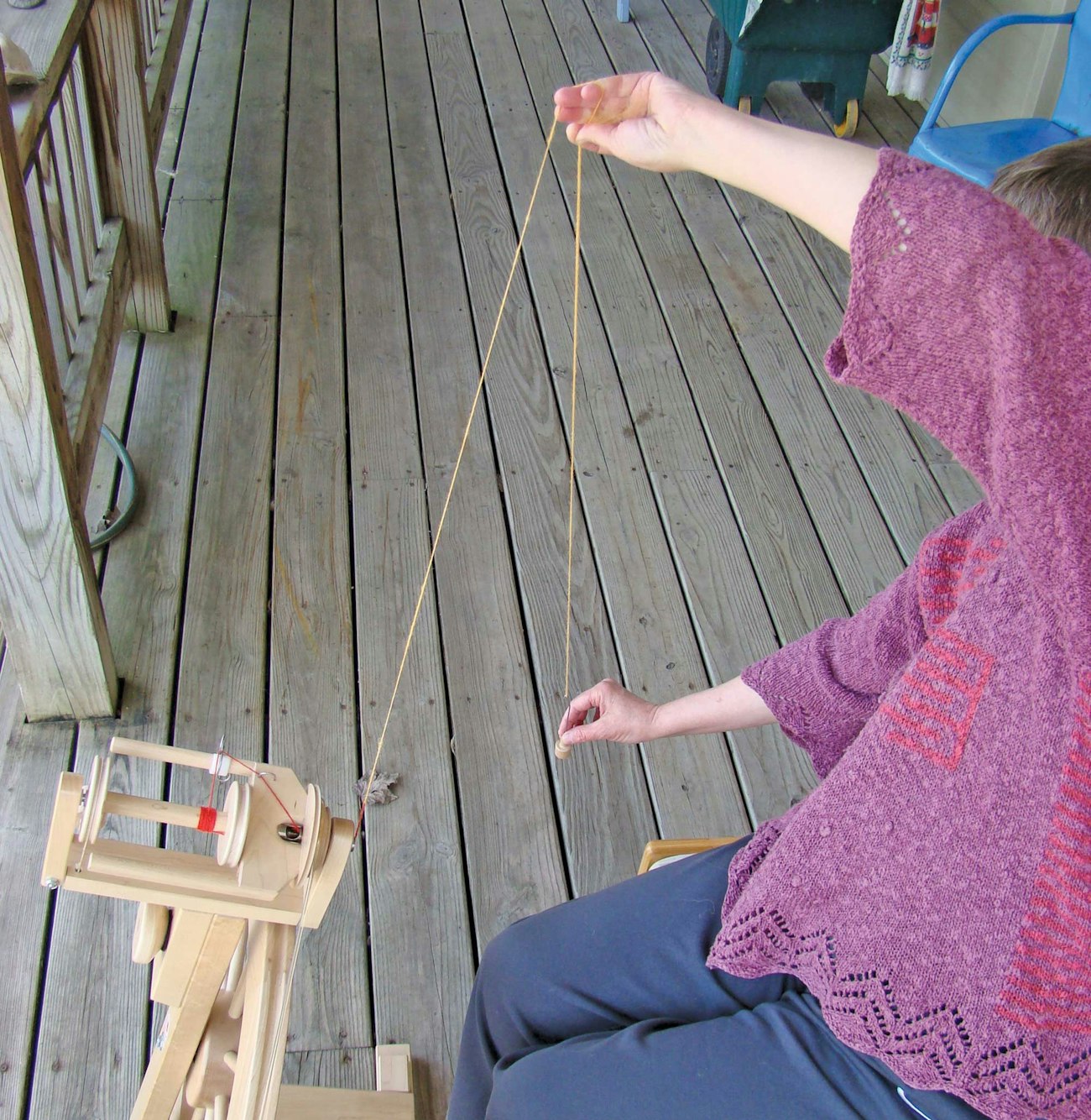
5) Let go of the orifice hook and allow the two strands of singles to ply together.
(I learned this technique from Rita Buchanan.)
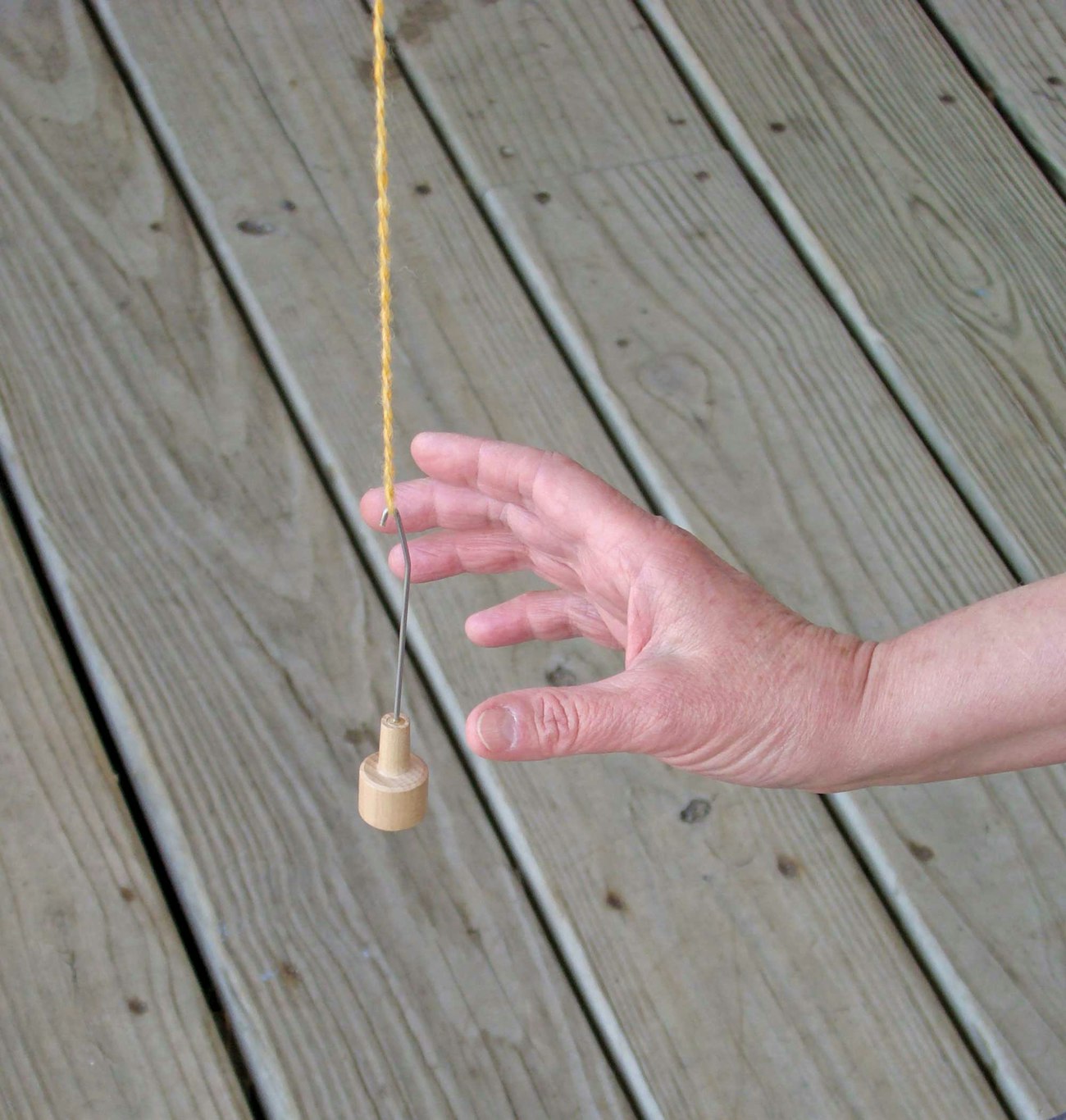
At the beginning of a spinning project, whether just one bobbin or multiple skeins, I make a fresh plied sample with singles that have just been spun. I keep this sample for the rest of the project to test my singles. The reason for making a fresh sample is that singles that rest on a bobbin for any length of time become temporarily set or stale (I call it the “bed head” effect), and they will not ply back on themselves with an accurate amount of twist.
There are a couple of big advantages to using a reference sample to test for consistent thickness. One, your fingertips have vast quantities of sensory receptors in them, making them the perfect tools for determining differences in thickness. Two, because you are doubling a plied sample to test, you are essentially quadrupling your chances of identifying variations in thickness. Three, there is no need to remember or write down any numbers.
To learn more about how Amy Tyler maintains a consistent diameter and thickness while spinning, check out “Ask a Spinning Teacher: Improving Consistency” in Spin Off Fall 2015.
Amy Tyler lives in northern lower Michigan, where knitted items of all warmths and thicknesses come in handy. When she’s not petting her dog, she knits, spins, writes, and teaches. Her website is stonesockfibers.com.
Originally published August 14, 2017; updated April 28, 2025.

